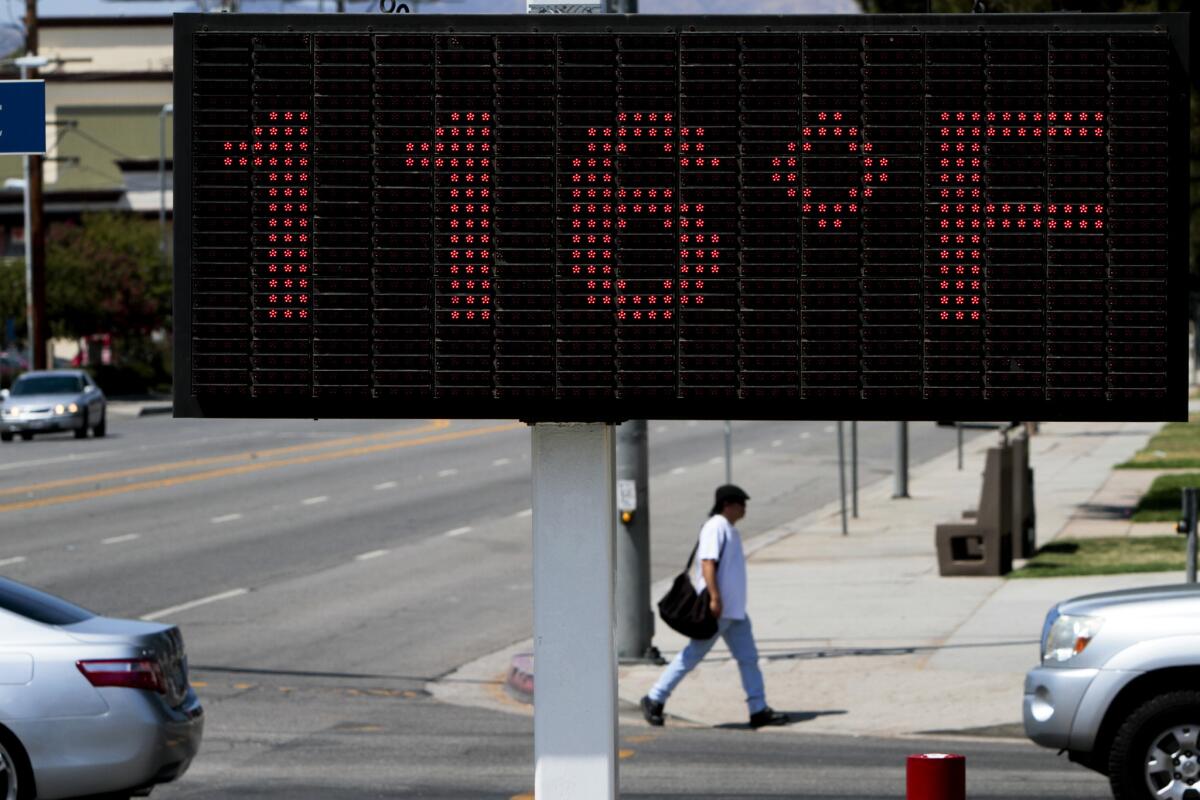Heat waves could be predicted weeks in advance, study finds

- Share via
Scientists have discovered a weather pattern that foreshadows heat waves and could be used to predict them more than two weeks in advance, well beyond the 10-day range of weather forecasts, a new study reports.
Researchers at the National Center for Atmospheric Research wondered if the prolonged and often deadly heat waves that hit the United States and other Northern Hemisphere countries during the summer could be triggered by large-scale atmospheric circulation patterns.
They started by searching weather records before 20 extreme heat waves since 1948, but there were so few examples it was difficult to find patterns amid the statistical noise.
“These are extreme events. They are very rare by definition,” said Haiyan Teng, a climate scientist with the center and lead author of the study published Sunday in Nature Geoscience.
So researchers used a computer simulation of 12,000 years of atmospheric conditions that included approximately 6,000 heat waves. They found that major heat waves tend to happen after an alternating sequence of five high- and low-pressure systems they dubbed “wavenumber-5.”
The pattern essentially forms a ring of weather systems that move slowly across the mid-latitudes of the Northern Hemisphere, eventually shutting down rainfall and setting the stage for a heat wave.
The odds of a heat wave in the United States rose 15 to 20 days after that weather pattern formed, scientists found. In some cases, heat waves were more than four times more likely to happen, the computer model showed.
After making that discovery, researchers tested the model with historical measurements and found that some of the heat waves in the record books were indeed preceded by that circulation pattern.
The takeaway, Teng said, is that “some extreme events may be more predictable than day-to-day weather.”
Though the pattern could be useful to tell whether there is a higher or lower chance of a heat wave in the next several weeks, Teng warned, it cannot be used to predict specific temperatures.
As anyone who watches the weather forecast knows, that predictive ability drops off after about 10 days.
The findings could give emergency managers more time to prepare for the type of prolonged heat spell the United States last saw in June and July of 2012. A heat wave that hung over North America in the summer of 2006 killed hundreds of people.
“Because of the damage to society, there is a higher priority to produce a probability forecast,” Teng said.
Twitter: @tonybarboza







